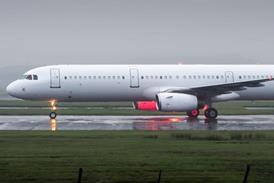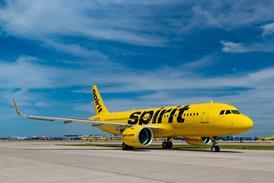Passenger traffic appears to have rolled along at a brisk tick so far this year, with many markets now back to pre-crisis levels. However, yields are a different matter, writes Chris Tarry of CTAIRA
As year-end approaches it is perhaps worthwhile to look back at how early traffic forecasts for 2004 actually measure up to reality and, indeed, take a glimpse at the near future.
At the end of last year the view from IATA was that international passenger traffic would grow by 7-8%. On that score, the world appears to be ahead of target. Over the first nine months to September traffic was up by some 17% against 2003 and by some 8% compared with the first three quarters of 2000. For September itself, the latest data shows that traffic grew by some 10.9%, although again that translates into an increase of 5% over the same month in 2000.
However, the recovery is not evenly spread. International traffic for airlines in both Europe and North America is still below the levels of 2000:0.7% and 2.8% respectively.
A few weeks ago ICAO published its expectations for future traffic growth suggesting that the total for the scheduled passenger airlines should be some 6.2% higher this year than last. Compared with 2000 this represents a 4.5% increase. Within this total the expectation is that North America will show 5.6% growth against 2003 and Europe 5.1%.
The fortunes of individual airlines are also diverse, depending upon their exposure to particular traffic markets and regions. Of late, a number of US airlines have stated that they intend to increase their presence in the international market. In reality this is a rerun of previous US response to downturn in the domestic market. Over the last decade this has been suggested as a strategy before and resulted in some major aircraft ordering activity. Not withstanding the equipment issues associated with a further push into the international market place it is interesting to look at the recent experiences of the US airlines in terms of traffic in their major markets.
The traffic data that we have analysed here is from the US Air Transport Association (ATA) which captures the experiences of the majority of the industry. For consistency with the earlier data we have also focused on the month of September. Similarly we have compared the latest data with 2003 and also with the 2000 peak as a base year. A particularly interesting feature is the divergent rates of change in passenger numbers and passenger traffic.
Overall, passenger numbers for the ATA airlines in September were some 5.6% higher than in 2003 but still 12% lower than back in 2000. There is, however, a major difference between the overall figures for international and domestic passenger numbers. Domestic numbers in September were some 11% lower than four years earlier whereas international passenger numbers were almost 4% higher than in 2000. With the exception of April and May international passenger numbers have been at record levels for every month so far this year.
Measured in terms of traffic (revenue passenger kilometres or miles) the conclusion apart from the Latin American market is that distances flown are generally longer. This is most evident in the US domestic market and results from a degree of modal switch. The most dramatic change has been in the Latin American market where substantial new capacity has been added with the inevitable consequences on yield. Here we estimate that yields have declined by some 14% since September 2000. That compares with declines of 5% on the Atlantic and 3.2% on the Pacific over the same period. However, even the Latin American decline is modest when compared with that of the domestic market - down some 26% compared with September 2000.
What then of the future? For the industry as a whole, it appears that traffic, if not passenger numbers, is beginning to move ahead of the previous record levels set in 2000. But within this total there are some regions that are doing better than others. The ICAO forecast is for growth in total traffic of some 5-6% for 2005 and 2006 which in reality is not far away from the rule-of-thumb long-term trend. Near term, the economic outlook in a number of regions looks uncertain and although there has been a weakening in the influence that the economy now has as a driver of traffic, it still remains an important factor. In reality, the biggest influence on the future well being will be the rate of increase in seat capacity. It is this that affects prices most and, as ever, it is the value of the traffic rather than absolute volume that is the key to industry profitability - a theme we will continue to revisit.
Source: Airline Business























